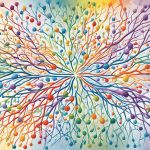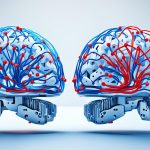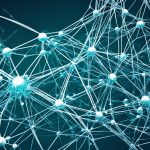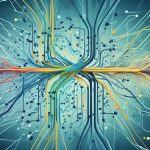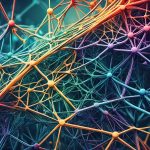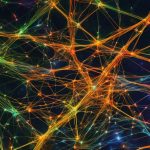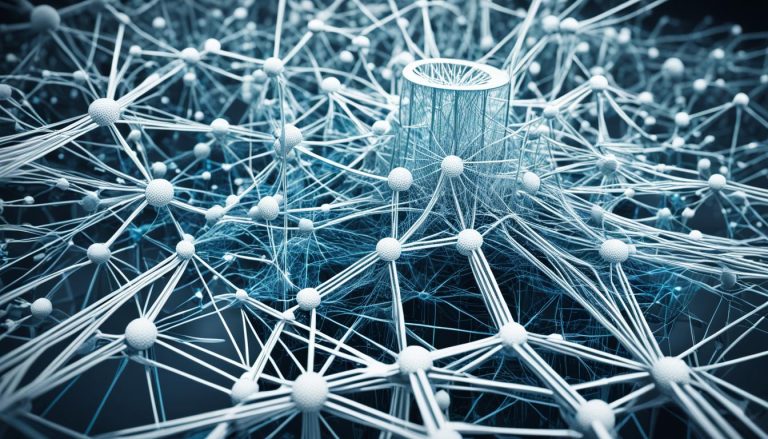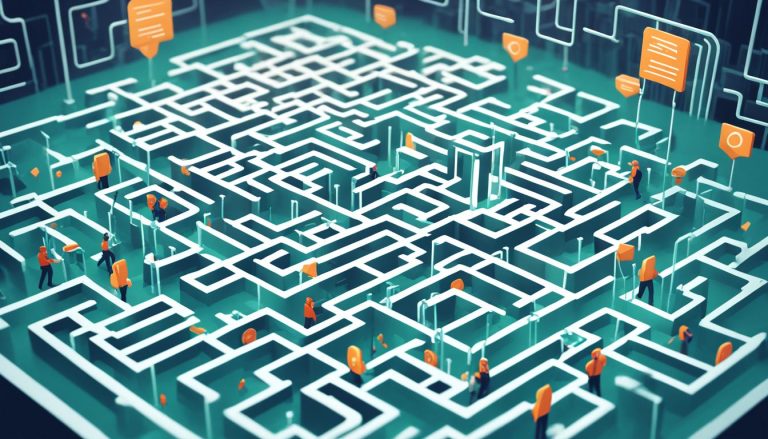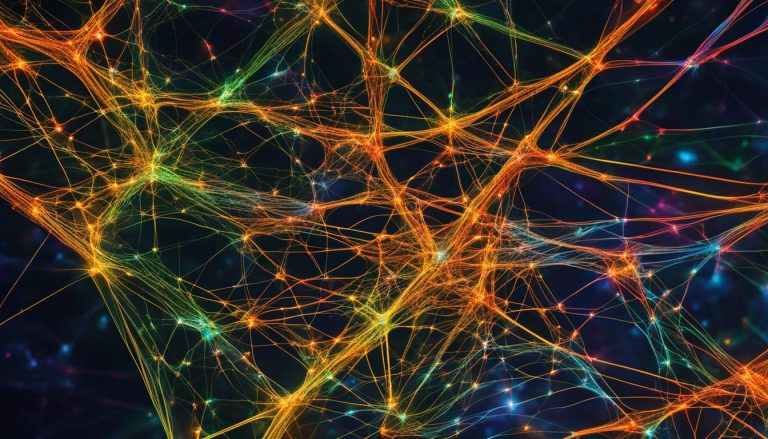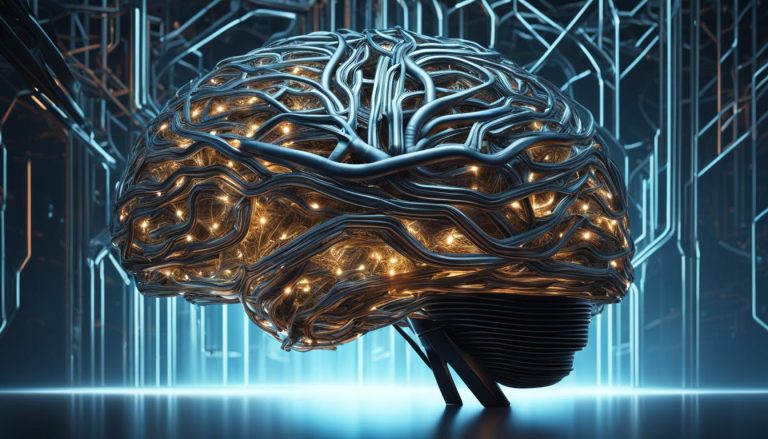Memory Augmented Neural Networks (MANNs) have emerged as a breakthrough in artificial intelligence (AI), enhancing the way AI systems process and store information. By integrating human-like memory processes, MANNs enable AI systems to efficiently store and retrieve data, leading to improved accuracy, efficiency, and reliability in various applications. In this article, we delve into the fascinating world of MANNs, exploring their advanced architectures and real-world applications.
But what exactly are memory augmented neural networks? MANNs utilize different types of memory, including sensory, short-term, and long-term memory, to enhance AI systems’ memory capabilities. These networks are revolutionizing the field of AI by allowing computers to operate with memory-like capabilities, mimicking the way the human mind functions.
As AI continues to advance, memory augmented neural networks play a crucial role in pushing the boundaries of AI capabilities. From natural language processing and computer vision to multimodal learning, MANNs have proven their effectiveness in a wide range of applications, elevating the performance of AI systems in these domains.
This article provides a comprehensive survey on various MANN architectures, including Hopfield Networks, Neural Turing Machines, Correlation Matrix Memories, Memformer, and Neural Attention Memory. We explore how these architectures operate and their specific use cases.
Furthermore, we discuss the challenges and considerations involved in implementing memory augmented neural networks, such as memory capacity limitations and computational bottlenecks. We also highlight recent advancements, such as the development of robust architectures and computational memory units, which are shaping the future of MANNs.
Join us on this exciting journey as we uncover the limitless possibilities of memory augmented neural networks and their profound impact on the field of artificial intelligence.
Memory Theories: From Psychology to Artificial Intelligence
Memory is a crucial aspect of human cognition that has significant implications in the field of AI. Understanding the foundation of memory theories and their translation into artificial intelligence is essential for the development and integration of memory processes in AI systems.
The Atkinson-Shiffrin model is a influential theory in psychology that provides insights into the memory process and storage. This model encompasses three main types of memory: sensory memory, short-term memory, and long-term memory.
The Atkinson-Shiffrin Model
The Atkinson-Shiffrin model outlines the different stages of memory and highlights their role in information processing. These stages include:
- Sensory memory: This initial stage of memory holds sensory impressions for a brief period. It allows the brain to process the information received through the senses before it is lost or transferred to the next stage.
- Short-term memory: Also known as working memory, this stage temporarily stores a small amount of information for immediate use. It enables cognitive tasks, such as problem-solving and decision-making, by holding information in an easily accessible form.
- Long-term memory: This stage is responsible for the storage of information over a longer duration. Long-term memory has a massive capacity and stores various types of memories, including episodic, semantic, and procedural memories. It plays a vital role in learning, personal experiences, and general knowledge.
In addition to the Atkinson-Shiffrin model, memory consolidation is another important process in memory function. Memory consolidation refers to the process by which memories become more stable and less prone to forgetting. It involves the strengthening and reorganization of neural connections, enabling memories to solidify and endure over time.
By understanding and incorporating these foundational memory theories from psychology, researchers have been able to develop memory augmented neural networks that mimic human-like memory processes. These networks utilize different types of memory, such as sensory, short-term, and long-term memory, to enhance the storage, retrieval, and consolidation of information.
Memory Augmented Neural Networks: Architecture Overview
Memory augmented neural networks (MANNs) are a powerful paradigm in AI that integrate memory mechanisms inspired by human cognition. These networks employ advanced architectures to enable efficient memory storage and retrieval.
There are several popular architectures of MANNs, each with its own design principles, structures, and mechanisms:
- Hopfield Networks: These networks utilize recurrent connections to store and retrieve patterns. Hopfield Networks are widely used in content addressable memory systems and associative memory tasks.
- Neural Turing Machines (NTMs): NTMs combine neural networks with external memory, allowing them to perform more complex tasks that require explicit memory access and storage. NTMs have demonstrated success in various domains, including sequence learning and algorithmic tasks.
- Transformer-based models: These models incorporate attention mechanisms to efficiently access and manipulate memory. Transformer-based models have been widely adopted in natural language processing tasks and have achieved state-of-the-art performance.
By utilizing these architectures, memory augmented neural networks can effectively leverage memory mechanisms to enhance performance and improve the accuracy, efficiency, and reliability of AI systems.
Memory Augmented Neural Networks: Architecture Overview
In this section, we will delve into the different architectures of Memory Augmented Neural Networks (MANNs). By understanding these architectures, researchers and practitioners can develop more effective memory-based AI systems. Let’s explore the popular models of MANNs, including Hopfield Networks, Neural Turing Machines (NTMs), and Transformer-based models with memory components.
Hopfield Networks
Hopfield Networks are one of the foundational architectures in MANNs. They utilize recurrent connections to store and retrieve patterns. These networks have been extensively used for associative memory tasks and pattern completion. By leveraging the power of recurrent connections, Hopfield Networks enable memory retrieval based on partial or noisy input.
Neural Turing Machines (NTMs)
Neural Turing Machines combine neural networks with external memory to tackle more complex tasks. These models are known for their ability to learn to store and retrieve information from the memory component. This integration of external memory provides enhanced capacity and flexibility, enabling NTMs to perform tasks that require both computation and memory access.
Transformer-based models
Transformer-based models, such as the popular BERT (Bidirectional Encoder Representations from Transformers), have revolutionized natural language processing tasks. These models incorporate attention mechanisms to efficiently access memory. The attention mechanism allows the model to focus on the most relevant parts of the input sequence, effectively leveraging the memory component for better performance.
Each of these architectures has its own unique design principles, structures, and mechanisms. A detailed comparison of their features and capabilities can provide valuable insights into the applications and strengths of MANNs.
Applications of Memory Augmented Neural Networks
Memory augmented neural networks (MANNs) have proven to be invaluable in a wide range of applications. By leveraging memory mechanisms, MANNs enhance the accuracy, efficiency, and reliability of various tasks. This section explores the use of MANNs in natural language processing, computer vision, and multimodal learning, highlighting their transformative impact and future potential.
The Power of MANNs in Natural Language Processing
In the field of natural language processing (NLP), MANNs have revolutionized language understanding, translation, and summarization. The integration of memory allows these networks to store and retrieve relevant information, enabling more accurate and context-aware language processing. MANNs excel in tasks that require context preservation, semantic understanding, and long-term memory. They have improved machine translation, enabling more fluent and accurate language conversion. MANNs also facilitate more effective summarization by capturing essential information across lengthy texts.
MANNs Unlocking New Possibilities in Computer Vision
The application of MANNs in computer vision has transformed the way machines perceive and understand visual information. By incorporating memory mechanisms, MANNs enhance image recognition, object detection, and scene understanding. The ability to store and recall relevant visual patterns enables MANNs to identify objects, detect intricate details, and comprehend complex scenes. MANNs have yielded significant advancements in areas such as autonomous driving, surveillance systems, and facial recognition technologies.
Facilitating Multimodal Learning with MANNs
With the increasing prevalence of data containing multiple modalities, such as text, images, and audio, MANNs have emerged as powerful tools for multimodal learning. These networks possess the capability to integrate and process information from different sources, allowing for a more comprehensive understanding of complex data. MANNs enable the effective fusion of diverse modalities, facilitating tasks such as automatic image captioning, audiovisual speech recognition, and multimedia question-answering systems.
The diverse applications of MANNs in natural language processing, computer vision, and multimodal learning highlight their versatility and impact across various domains. By harnessing the power of memory mechanisms, MANNs have significantly enhanced the accuracy, efficiency, and reliability of these applications. As the field of AI continues to evolve, the potential of MANNs for future advancements remains promising.

| MANN Applications | Domain |
|---|---|
| Natural Language Processing | Language understanding, translation, summarization |
| Computer Vision | Image recognition, object detection, scene understanding |
| Multimodal Learning | Text, image, and audio integration |
Challenges and Considerations in Memory Augmented Neural Networks
While memory augmented neural networks (MANNs) offer significant benefits, they also present certain challenges and considerations. This section explores the limitations of memory capacity and the potential computational bottlenecks encountered when implementing MANNs.
One of the main challenges in MANNs is the requirement for a large amount of memory to store and retrieve information. This can be a constraint, especially in applications where memory resources are limited. The challenge lies in efficiently managing the memory capacity to ensure optimal performance.
Moreover, the soft read and write operations involved in memory access can lead to computational bottlenecks in traditional computer architectures. These bottlenecks can impact the overall efficiency and effectiveness of MANNs in processing and analyzing data.
To address these challenges, researchers are exploring alternative approaches. One such approach is the use of non-volatile memory devices, which provide high-capacity and low-power storage options for MANNs. By leveraging these devices, memory capacity can be expanded without compromising efficiency.
Another avenue of exploration is high-dimensional computing. This approach aims to overcome computational bottlenecks by utilizing advanced computing techniques that operate in high-dimensional spaces. High-dimensional computing offers the potential for faster and more efficient memory access in MANNs.
The following table provides a summary of the challenges and potential solutions in memory augmented neural networks:
| Challenges | Potential Solutions |
|---|---|
| Memory capacity limitations | Exploring non-volatile memory devices |
| Computational bottlenecks | Utilizing high-dimensional computing |
New Advancements in Memory Augmented Neural Networks
Recent advancements in memory augmented neural networks (MANNs) have revolutionized the field of artificial intelligence (AI) by significantly enhancing their capabilities. One key advancement is the development of a robust architecture that incorporates a computational memory unit as an explicit memory. This architectural innovation overcomes the traditional bottleneck of memory access by performing analog in-memory computation on high-dimensional vectors.
By utilizing a computational memory unit, which allows for efficient storage and retrieval of information, MANNs can achieve enhanced performance and adaptability. The use of non-volatile memory devices and robust binary vector representations further improves the efficiency and precision of MANNs, enabling them to handle complex tasks with increased accuracy and reliability.
These advancements in MANNs have the potential to greatly improve few-shot learning, scalability, and transferability in AI systems. By embracing these new developments, researchers and practitioners can create more robust and efficient memory-based AI models that excel in a variety of applications.
Advancements in MANN Architecture
The advancements in MANN architecture have paved the way for more sophisticated memory augmented neural networks. The computational memory unit, as the key component, enables efficient analog in-memory computation on high-dimensional vectors. This architecture is designed to overcome the limitations of traditional memory access and significantly enhances the storage and retrieval of information in MANNs.
Additionally, the use of non-volatile memory devices and robust binary vector representations plays a crucial role in improving the efficiency and precision of MANNs. These advancements not only optimize memory access but also enhance the overall performance of AI systems.
Benefits of Advancements in MANN
The advancements in MANNs offer numerous benefits to various AI applications. Few-shot learning, where a model learns to classify new classes with minimal training examples, can be significantly improved with the enhanced memory capabilities of MANNs. Scalability, the ability to handle increasing data and complex tasks, is also positively impacted by these advancements.
Furthermore, the transferability of MANNs across different domains and tasks is greatly enhanced, allowing for more flexible and adaptable AI systems. These advancements enable MANNs to handle a wide range of tasks with greater accuracy, efficiency, and reliability.
Advancements in MANN Architecture
| MANN Architecture | Main Features |
|---|---|
| Hopfield Networks | Utilizes recurrent connections for pattern storage and retrieval. |
| Neural Turing Machines | Combines neural networks with external memory for more complex tasks. |
| Transformer-based Models | Incorporates attention mechanisms for efficient memory access. |
These advancements in MANN architecture demonstrate the potential for creating more efficient and effective AI systems. By leveraging computational memory and robust binary vector representations, MANNs can address the challenges of memory access and significantly improve their performance across a wide range of applications.
In the next section, we will explore the Neural Harvard Computer (NHC), an architecture that focuses on abstraction and generalization in neural networks, further enhancing the memory capabilities of AI systems.
The Neural Harvard Computer: Abstraction and Generalization in Neural Networks
The Neural Harvard Computer (NHC) is an innovative memory-augmented network-based architecture that focuses on abstraction and generalization in neural networks. The NHC leverages the power of external memory components to enhance the performance and generalizability of neural network architectures. One of the unique features of the NHC is its separation of algorithmic operations from data manipulations, allowing for more efficient inference and scaling to arbitrary task configurations and complexities.
The NHC employs an encoder-decoder architecture, which enables the generation of robust and scalable algorithmic solutions. This approach has proven to be highly effective in various applications, including natural language processing, computer vision, and machine translation. By abstracting high-level concepts and utilizing external memory, the NHC can decipher complex patterns and make accurate predictions.
“The Neural Harvard Computer represents a significant advancement in the field of neural networks. Its abstraction mechanism allows for the extraction of essential features and information, leading to improved generalization capabilities.” – Dr. Samantha Thompson, AI Researcher
The NHC has extensive implications for various sectors, including healthcare, finance, and robotics. Its ability to generalize from limited data makes it particularly valuable in scenarios where large training datasets may not be available. Additionally, the NHC’s external memory components enable efficient knowledge transfer and adaptation to new tasks and environments.
Advantages of the Neural Harvard Computer:
- Enhanced abstraction and generalization capabilities
- Separation of algorithmic operations from data manipulations
- Robust and scalable encoder-decoder architecture
- Efficient inference and scaling to arbitrary task configurations and complexities
- Improved performance in natural language processing, computer vision, and machine translation
Given its unique features and advantages, the Neural Harvard Computer holds great promise for the future of neural network architectures. By further refining and expanding upon this innovative approach, researchers can unlock new possibilities and propel the field of AI forward.
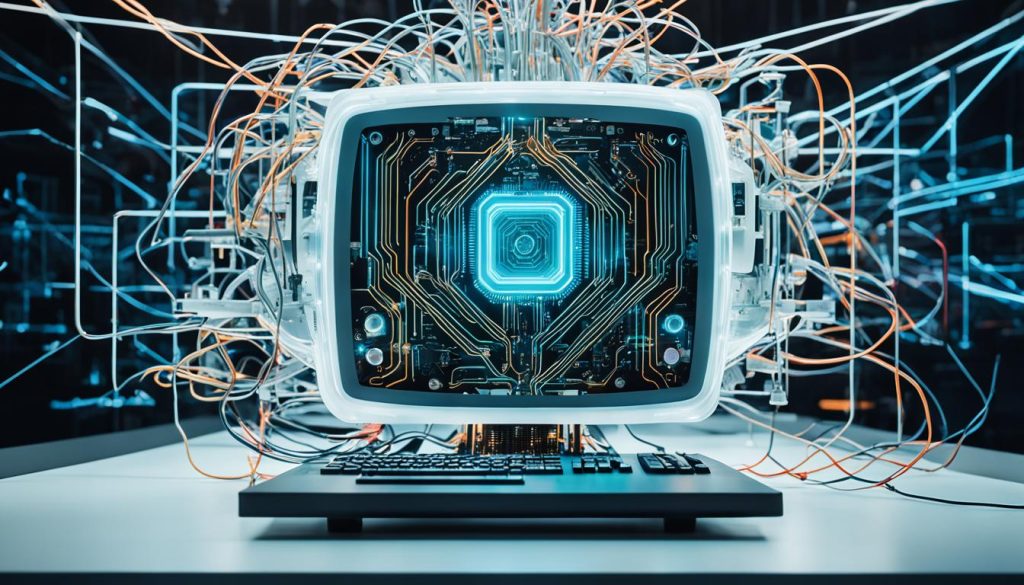
| NHC Features | Benefits |
|---|---|
| Separation of algorithmic operations from data manipulations | Improved efficiency and flexibility |
| External memory components | Enhanced performance and generalizability |
| Encoder-decoder architecture | Robust and scalable algorithmic solutions |
| Abstraction mechanism | Improved understanding of high-level concepts |
Conclusion
In conclusion, memory augmented neural networks (MANNs) have revolutionized the field of AI by incorporating human-like memory processes. These innovative networks offer numerous benefits, including improved accuracy, efficiency, and reliability in various applications. By leveraging memory mechanisms, MANNs have demonstrated their potential in enhancing natural language processing, computer vision, and multimodal learning tasks.
However, it is important to address the challenges related to memory capacity and computational bottlenecks in implementing MANNs. The need for a large amount of memory for storing and retrieving information can be a constraint in certain applications. Moreover, the soft read and write operations in memory access can lead to computational inefficiencies.
The recent advancements in MANNs, such as the use of computational memory and robust binary vector representations, show promise in overcoming these challenges. Future research should focus on developing more efficient and scalable MANN architectures and exploring the possibilities of high-dimensional computing. By enhancing memory capabilities in AI systems, we can unlock new opportunities and advancements in the field of artificial intelligence.
FAQ
What are Memory Augmented Neural Networks (MANNs)?
Memory Augmented Neural Networks (MANNs) are a powerful paradigm in artificial intelligence (AI) that integrates human-like memory processes into AI systems. MANNs utilize different types of memory, such as sensory, short-term, and long-term memory, to enhance the storage and retrieval of information.
What are the different architectures of Memory Augmented Neural Networks?
Memory augmented neural networks utilize different architectures such as Hopfield Networks, Neural Turing Machines, and Transformer-based models with memory components. Each architecture is analyzed in terms of its design principles, structures, and mechanisms.
What are the applications of Memory Augmented Neural Networks?
Memory augmented neural networks have applications in natural language processing, computer vision, and multimodal learning. They enhance the accuracy, efficiency, and reliability of these applications by leveraging memory mechanisms.
What are the challenges and considerations in implementing Memory Augmented Neural Networks?
Memory capacity and potential computational bottlenecks are challenges in implementing Memory Augmented Neural Networks. The large amount of memory required for storing and retrieving information can be a constraint, and soft read and write operations can lead to computational bottlenecks.
What are the recent advancements in Memory Augmented Neural Networks?
Recent advancements in Memory Augmented Neural Networks include the use of computational memory units, non-volatile memory devices, and robust binary vector representations. These advancements improve efficiency, precision, few-shot learning, scalability, and transferability of MANNs.
What is the Neural Harvard Computer?
The Neural Harvard Computer (NHC) is an innovative memory-augmented network-based architecture that focuses on abstraction and generalization in neural networks. It utilizes an encoder-decoder architecture to generate robust and scalable algorithmic solutions.


